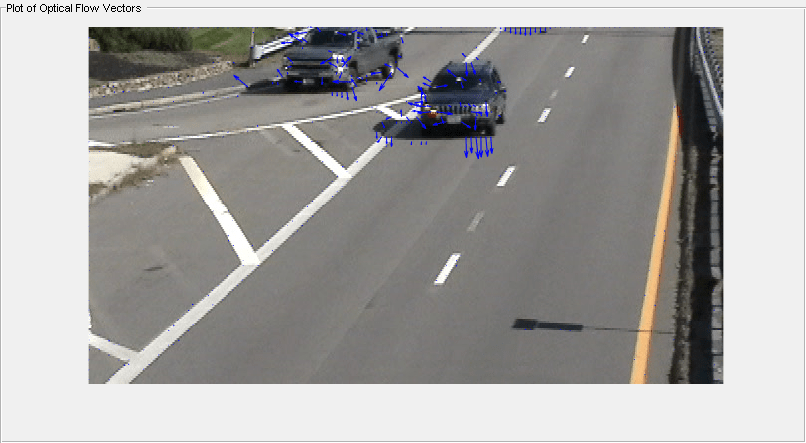opticalFlowLK
Object for estimating optical flow using Lucas-Kanade method
Description
Create an optical flow object for estimating the direction and speed of a moving
object using the Lucas-Kanade method. Use the object function estimateFlow to estimate the optical flow vectors. Using the reset object function, you can reset the internal state of the optical flow
object.
Creation
Description
opticFlow = opticalFlowLK
opticFlow = opticalFlowLK('NoiseThreshold',threshold)'NoiseThreshold'
specified as a Name,Value pair. Enclose the property name in
quotes.
For example, opticalFlowLK('NoiseThreshold',0.05)
Properties
Object Functions
estimateFlow | Estimate optical flow |
reset | Reset the internal state of the optical flow estimation object |
Examples
Algorithms
References
[1] Barron, J. L., D. J. Fleet, S. S. Beauchemin, and T. A. Burkitt. “ Performance of optical flow techniques.” In Proceedings of the IEEE Conference on Computer Vision and Pattern Recognition (CVPR),236-242. Champaign, IL: CVPR, 1992.
Extended Capabilities
Version History
Introduced in R2015a
See Also
opticalFlowRAFT | quiver | opticalFlow | opticalFlowHS | opticalFlowFarneback | opticalFlowLKDoG

